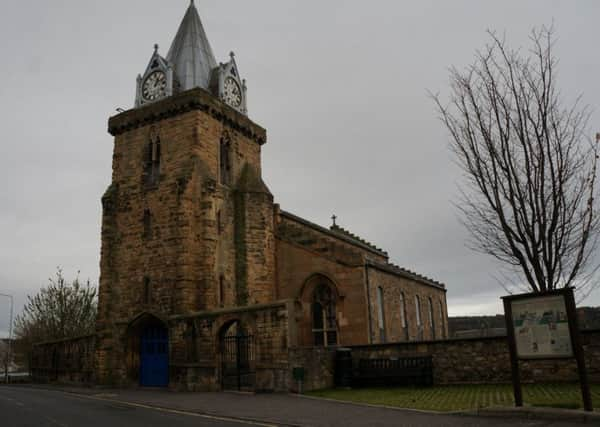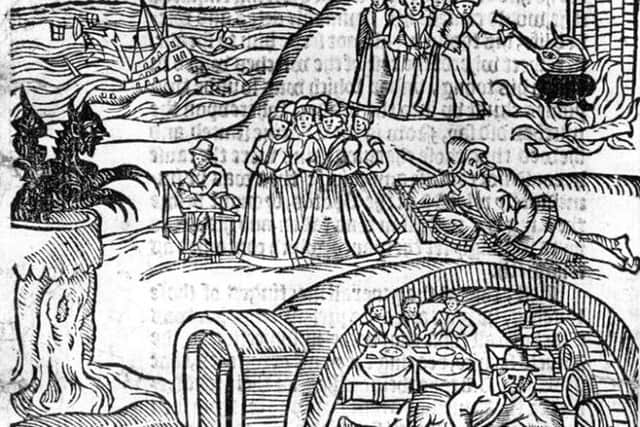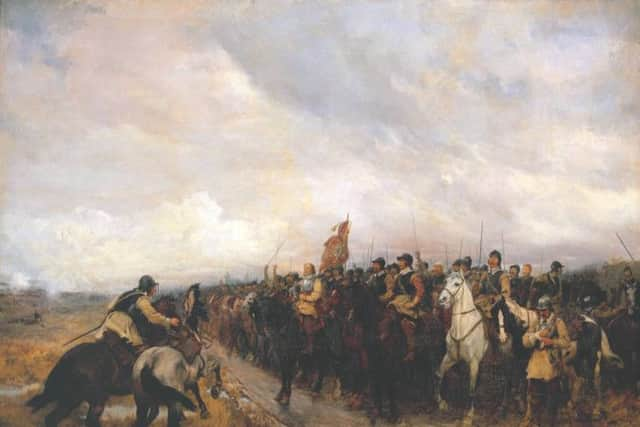How a small Fife town became a '˜hotbed of witch-finding and punishing'


Inverkeithing boasts a history as long and distinguished as any of the other former royal burghs dotted along the Fife coast. While it doesn’t attract as many visitors as Culross or look as picture-perfect as Pittenweem, the town was once important enough to be the home of royalty.
It was the favoured residence of Annabella Drummond, the queen consort to Robert III who died in 1401. Part of the medieval complex of buildings she called home still survives.
Advertisement
Hide AdReminders of the past are everywhere in Inverkeithing. The centre is laid out in a square formation once common in market towns across the country.


Standing at its head is St Peter’s church, whose landmark tower dates back to the 14th century. Within the old kirk you can view the elaborately carved stone baptismal font Annabella gifted to the congregation - a rare example of early Scottish religious sculpture.
But take a walk around Inverkeithing today and you’ll struggle to find any reference to perhaps the darkest chapter in the town’s history. In the mid 1600s, this ancient settlement became one of “the hotbeds of witchfinding and punishing”.
Walk down the High Street towards North Queensferry and you’ll find a small park called Witchknowe.
Much of it was built on in the Victorian era, but 400 years ago it would have been an open field. According to local tradition, it was here that dozens of so-called witches were burnt alive.


Witch trials were not uncommon in the late 16th century and early 17th century. The most famous example in Scotland was the case heard at North Berwick in 1590, which ran for two years and implicated some 70 people.
Advertisement
Hide AdAccording to church records, at least 51 people - the majority of whom were women - were tried and executed for witchcraft in the town between 1621 and 1652.
In comparison, the larger town of Kirkcaldy executed 18 people for witchcraft in the same period.
Advertisement
Hide AdThe worst violence took place from 1649-1650, a 12-month period which academics believe saw the highest ever number of executions take place across Scotland.
But why was Inverkeithing a centre for such violence?
A history of the town’s church notes: “In 1632 there was an outbreak of cholera in Inverkeithing, and during the 1640s famine and plague swept Scotland caused by the civil war.
“This caused an upsurge in the belief in, and fear of, witches. The General Assembly of the Church of Scotland, who at that time had great powers, passed several acts for the suppression of witches.”
The location of Inverkeithing left it vulnerable in times of political unrest. The 1640s saw civil war rage. Armies swept through the town on several occasions.
Following the execution of Charles I in 1649, Scotland immediately proclaimed his son as King Charles II. This angered the new republican English Commonwealth led by Oliver Cromwell. Fear of English invasion gripped the country.
Added to this febrile atmosphere was the Rev. Walter Bruce, who had been appointed minister at St Peter’s in 1641. A known witch-hunter, his zeal for finding “sorcerers” shocked even the Kirk authorities of the time.
Advertisement
Hide AdWith Cromwell’s armies ready to invade, Bruce led a brutal local repression that saw dozens of innocents killed.
Such pointless deaths had no effect. Cromwell’s army invaded anyway and won a decisive victory against the Scottish Royalist forces at Dunbar in 1651 before crossing to Fife.
A brutal battle on July 20 saw the remaining Scots army chased through Inverkeithing, leaving the town in ruins.
The Rev. Bruce survived, and remained at St Peter’s until 1673.
